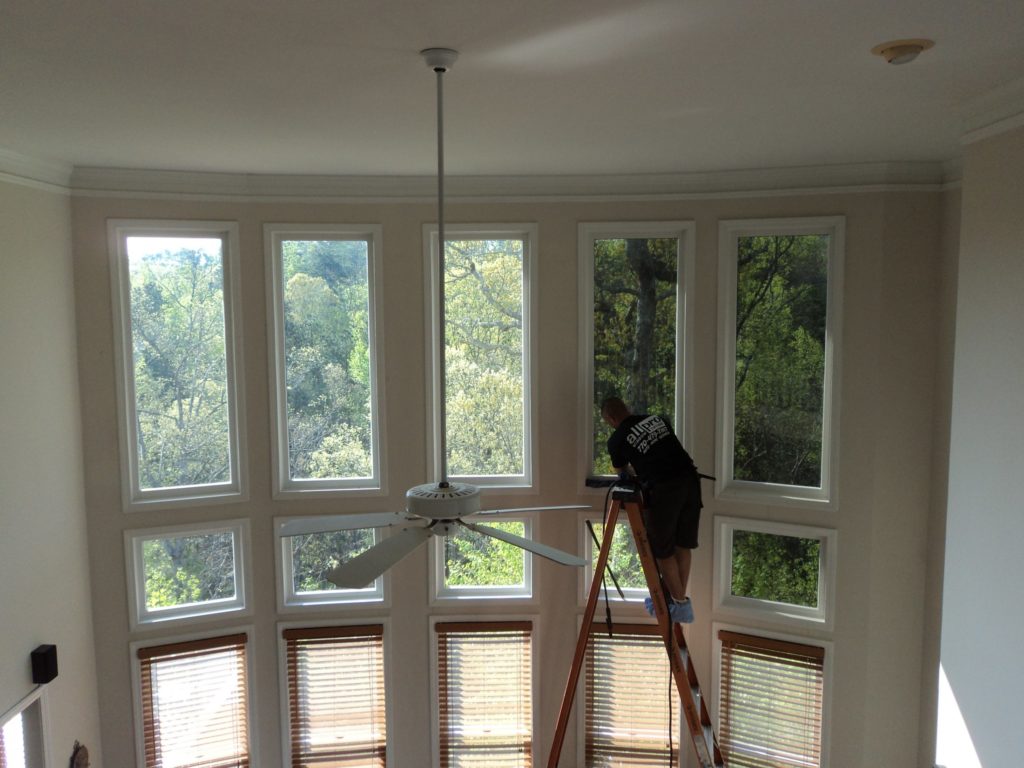Just How Residential Window Tinting Boosts Your Home's Energy Performance
Residential home window tinting provides an engaging option for home owners seeking to boost power effectiveness within their living areas. By using specialized films to home windows, it effectively minimizes heat transfer, consequently stabilizing interior temperatures and decreasing the requirement for too much home heating or air conditioning.
Comprehending Window Tinting
Understanding window tinting is essential for house owners looking for to enhance both comfort and power effectiveness in their home. Residential Window Tint. Window tinting involves the application of a slim film to the interior or exterior surface of glass home windows. This movie can significantly modulate the quantity of sunshine and warm that goes into a home, thus affecting indoor environment problems
There are various types of window tinting movies available, each with unique residential or commercial properties. The performance of window tinting is commonly determined by its Visible Light Transmission (VLT) percent, which shows how much light can pass through the film.
Benefits of Energy Performance
Home window tinting not just improves aesthetic appeals however likewise plays a significant duty in improving energy performance within domestic areas. By minimizing warmth transfer with windows, colored movies create an extra secure interior climate, which can cause substantial reductions in energy usage for heating & cooling. This power efficiency equates into lower utility bills, providing property owners with considerable lasting financial savings.

Furthermore, window tinting improves the comfort of living areas. By minimizing glare and blocking dangerous UV rays, tinted windows produce an even more pleasant environment, which can lead to boosted health for owners. The defense against UV rays also helps preserve furnishings and flooring from fading, adding to the longevity of family items.
How Tinting Works
Tinting films run via a combination of innovative products and innovations made to manage the quantity of solar energy going into a home. Primarily made up of polyester, these films frequently incorporate metallic or ceramic bits that mirror and absorb heat. This dual capability allows them to substantially lower the infiltration of ultraviolet (UV) rays and infrared radiation while allowing noticeable light to travel through.
The efficiency of home window tinting is gauged by its solar warmth gain coefficient (SHGC), which suggests just how much solar power is transmitted via the home window. Lower SHGC worths are more suitable as they denote better warm rejection. Furthermore, home window tints can feature a variety of shades, allowing property owners to tailor their visual choices while improving power performance.
Furthermore, these movies act as a barrier, avoiding heat loss during cooler months by reflecting interior warmth back into the living space. This thermal insulation result matches the cooling advantages obtained during warmer months, adding to a well balanced indoor environment year-round. By managing solar power efficiently, domestic home window tinting not only boosts convenience but likewise plays a crucial role in reducing energy usage and lowering utility bills.
Selecting the Right Color

There are various kinds of window movies available, consisting of dyed, metalized, and ceramic. Ceramic movies supply excellent heat see page control without jeopardizing exposure and are highly durable, making them a prominent choice.
Visible light transmission (VLT) is an additional vital variable, as it shows the quantity of all-natural light that can travel through the tinted glass. House owners ought to select a color with a VLT that matches their illumination preferences while still providing sufficient glow reduction.
Additionally, analyzing the solar heat gain coefficient (SHGC) can help identify just how well a color can block warmth from sunlight. A reduced SHGC suggests much better warmth control, eventually improving energy effectiveness.
Installation and Upkeep Tips
Proper installation and upkeep are important components in optimizing the benefits of household window tinting. To attain optimum outcomes, it is suggested to work with a certified specialist for setup. This guarantees that the tint is applied appropriately, preventing air bubbles, wrinkles, or misalignment that might compromise performance. Specialists also use specialized tools and techniques, which can improve the longevity and effectiveness of the color.
Complying with setup, maintenance is important to prolong the life of the window movie. It is recommended to wait a minimum of 1 month before cleaning up the colored home windows to allow the glue to heal completely. When cleaning, utilize a soft fabric and a mild, ammonia-free cleaner to stay clear of damaging the film. Stay clear of abrasive products that might scratch the surface area.
Resolving these problems quickly can protect against additional damage and maintain power efficiency. By adhering to these setup and upkeep pointers, house owners can guarantee their window tinting continues to offer considerable energy cost savings and convenience for years to come.
Conclusion
In conclusion, household window tinting offers as an effective option for improving energy performance within homes. By decreasing warm transfer and blocking damaging UV rays, home window films contribute to lower power usage and improved indoor company website convenience.
Home window tinting includes the application of a slim movie to the interior read this article or exterior surface of glass windows. By decreasing warmth transfer through home windows, tinted movies develop a much more steady indoor climate, which can lead to significant decreases in energy intake for home heating and cooling.The efficiency of window tinting is gauged by its solar heat gain coefficient (SHGC), which indicates exactly how much solar power is sent through the window. By taking care of solar energy effectively, residential home window tinting not only boosts convenience but likewise plays a vital role in reducing power intake and decreasing energy costs.
By minimizing warmth transfer and obstructing damaging UV rays, home window movies add to decrease power usage and improved indoor comfort.
Comments on “Why Residential Window Tint is Perfect for Office and Research Studies”